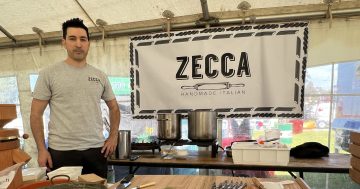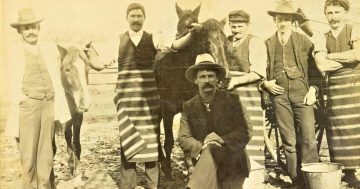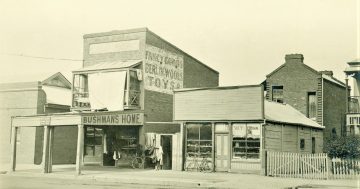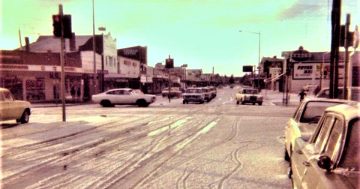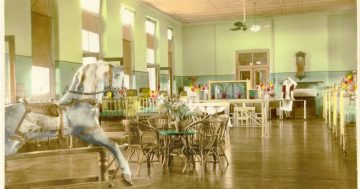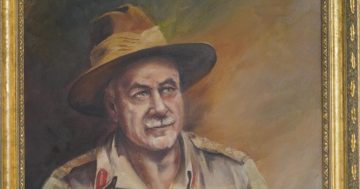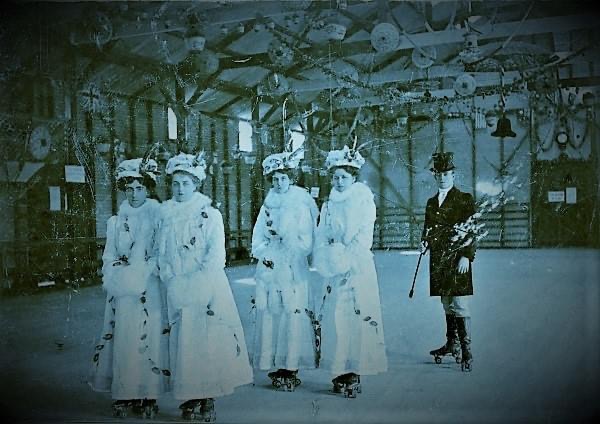
Mrs Greer (nee Collins), Miss Essie Eyles, Mrs G. Dunn (nee Eyles), Miss Merle Lammas and Mr Audrey Headley attend the White Night Carnival at the Wagga Skating Olympia, 8 July 1910. Photo: Wagga Wagga & District Historical Society Collection, CSURA.
This week the team from the Museum of the Riverina take us back to the early days of skating over a century ago.
In April 1910, a purpose-built ice skating rink opened in Wagga on Kincaid Street (near the junction with Fitzmaurice Street), under the management of Messrs E.E. Collins and S. Hayes. With a floor space of 132 x 60 feet, it was called the Wagga Skating Olympia.
The proprietors engaged the services of Professor R.W. Martin, direct from London, as conductor and floor manager. The Wagga Wagga Advertiser of 19 March 1910 reported that, “The Professor is adept upon skates and particularly in regard to fast skating and he gained fourth place in the two miles world championship tournament recently held in London.”
Messrs. Winslow’s ball bearing extension roller skates were used at the Olympia, and a brass band was constantly in attendance to provide music. No expense was spared in artistically decorating the interior of the building, and every comfort was provided for patrons. There were separate cloakrooms for men and women and seating accommodation provided for spectators.
A huge crowd attended the formal opening on Friday night of 8 April, with upwards of 800 tickets being sold. For the occasion the rink had been decorated with hanging festoons of varying colours, Japanese fans and Chinese lanterns.
From the cool and accomplished professor to the debutante who spent most of the time on the floor, some skated steadily with folded arms, the embodiment of self-confidence; others waved their arms frantically apparently under the impression that by doing so they were easily preserving their balance.
By all accounts the ladies were more adept than the gentlemen, they took matters more coolly and therefore came to grief less often. The Wagga Advertiser closed its article on the opening by musing that, “Possibly … there will be a few people in Wagga today taking their meals from the mantlepiece.”
The Olympia hosted regular carnivals and competitions and was a popular hangout for local youth. The ‘White Night Carnival’ held on 8 July 1910 was an event which required skaters to be dressed in white, which produced an array of inventive costumes including a snowflake, moonlight, a nurse, a cigarette, winter, a cricketer, a toothache cure and a baker. Prizes were awarded for the prettiest costume, most handsome costume, best comic costume and also the most graceful couple.
Photo and information supplied by Michelle Maddison, curator at the Museum of the Riverina.







